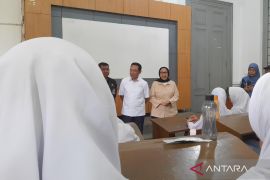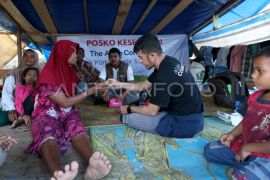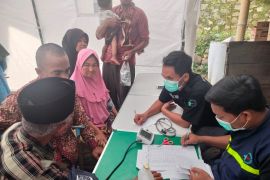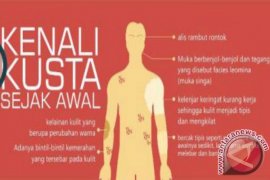"The strategy to control GGL consumption requires the cooperation of all stakeholders, including the young community and the private sector or the food industry," the Ministry's Director of Prevention and Control of Non-Communicable Diseases (P2PTM) Eva Susanti said in Jakarta on Friday.
According to the World Health Organization (WHO), excessive salt consumption can increase the risk of death from heart disease and stroke, excessive sugar contributes to obesity that could lead to diabetes, while excess fat increases the risk of heart disease and death.
Susanti said that as many as 28.7 percent of Indonesian people exceed the recommended GGL consumption threshold. Approximately 53.5 percent of the population consumes salt above the reasonable limit of 2 thousand milligrams per day.
The population of people who consume fat in excess of the safe limit of 67 grams per day is 24.24 percent. About 5.5 percent of people consume more sugar than the daily recommendation of 50 grams, she added.
According to her, the Ministry of Health's Basic Health Research (Riskesdas) data has shown that the prevalence of cardiovascular diseases, such as hypertension, has increased from 25.8 percent in 2013 to 34.1 percent in 2018, and diabetes mellitus (DM) from 6.9 percent to 8.5 percent.
The prevalence of DM, according to doctors' diagnoses, increased from 1.2 percent to 2 percent, and chronic kidney disease increased from 0.2 percent in 2013 to 0.38 percent in 2018.
In addition, data from the Social Security Administrator for Health (BPJS Kesehatan) in 2022 showed an increase in the amount of funding for dangerous diseases, which reached up to Rp24.06 trillion.
Health Heroes facilitator Gavra Arkananta advised the Health Ministry to use health messages effectively on food and beverage product labels to raise the awareness of young people regarding their health and the risks of threatening diseases.
“Currently, the size of health messages on product labels is so small that it is difficult to read. The majority of teenagers and young people visited by Health Heroes in schools do not understand nutritional value information (ING)," Arkananta pointed out.
The P2PTM Directorate of the Ministry of Health is cooperating with the Health Heroes as one of the stakeholders in the Cross-Sectoral Coordination Meeting on the Implementation Strategy of Health Minister’s Regulation Number 30 of 2013 concerning Information on GGL Content and Health Messages in Processed and Ready-to-Eat Foods.
From a regulatory perspective, the Drug and Food Control Agency (BPOM) Regulation Number 26 of 2021 concerning Processed Food Labels requires the inclusion of nutritional value information in an easily understood design in the form of a daily intake guide in monochrome colors and a Healthier Choice logo.
BPOM Regulation Number 31 of 2018 also requires the inclusion of health messages on processed food.
Related news: Ministry reminds public to maintain, improve health
Related news: Ministry encourages excise tax on GGL-dense products to tackle obesity
Translator: Andi Firdaus, Resinta S
Editor: Azis Kurmala
Copyright © ANTARA 2023












